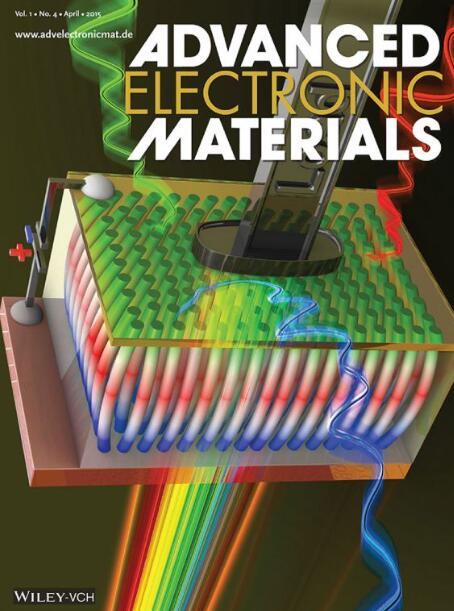Conjugated Polymer Nanoparticles for Biophotonic Applications: Preparation, Characterization, and Simulation in Biohybrid Interfaces
IF 5.3
2区 材料科学
Q2 MATERIALS SCIENCE, MULTIDISCIPLINARY
引用次数: 0
Abstract
Biophotonics has gained significant interest in recent years due to its potential in medical theranostic applications, with nano‐materials emerging as key enablers for advancing optical and electronic functionalities in biological environments. In this study, conjugated polymer nanoparticles (CP‐NPs), namely regio‐regular poly(3‐hexylthiophene) (P3HT), [6,6]‐phenyl C61‐butyric acid methyl ester (PCBM), and their blend (P3HT:PCBM), are exploited as nano‐materials for biophotonic applications. The CP‐NPs, obtained via a nanoprecipitation method, showed an average size of ca. 180 nm. Their optoelectrical properties indicate visible absorbance (350–600 nm) and red/near infra‐red (NIR, 650–900 nm) emission, demonstrating their suitability for biophotonic applications, in particular in biohybrid interfaces where effective light absorption and emission in biological environments are crucial. Interestingly, under light stimulation, the photocurrent response of the CP‐NPs in electrolyte solution (phosphate‐buffered saline, PBS) showed a stable and reproducible signal (current density ranging from 0.18 to 7 nA cm用于生物光子应用的共轭聚合物纳米粒子:生物杂交界面的制备、表征和模拟
近年来,由于生物光子学在医学治疗中的应用潜力,纳米材料成为生物环境中推进光学和电子功能的关键推动者,生物光子学获得了极大的兴趣。在这项研究中,共轭聚合物纳米粒子(CP‐NPs),即区域规则聚(3‐己基噻吩)(P3HT),[6,6]‐苯基C61‐丁酸甲酯(PCBM),以及它们的混合物(P3HT:PCBM),被开发为生物光子应用的纳米材料。通过纳米沉淀法获得的CP‐NPs平均尺寸约为180 nm。它们的光电特性表明可见光吸收(350 - 600nm)和红/近红外(NIR, 650 - 900nm)发射,证明了它们在生物光子应用中的适用性,特别是在生物环境中有效的光吸收和发射至关重要的生物混合界面中。有趣的是,在光刺激下,CP‐NPs在电解质溶液(磷酸盐缓冲盐水,PBS)中的光电流响应显示出稳定且可重复的信号(电流密度范围为0.18至7 nA cm−2),从而增强了它们的生物传感/刺激潜力。光刺激下CP‐NPs与生物流体(即PBS)相互作用的模拟显示出不同的载流子产生和输运行为,其中P3HT‐NPs表现出一致的电荷产生(高达3 × 1020 nA cm−3)。这些发现表明,CP‐NPs由于其高效的电荷传输、紫外-可见吸收、近红外发射以及与生物环境的可控相互作用,在光热治疗等生物光子应用方面前景广阔。
本文章由计算机程序翻译,如有差异,请以英文原文为准。
求助全文
约1分钟内获得全文
求助全文
来源期刊

Advanced Electronic Materials
NANOSCIENCE & NANOTECHNOLOGYMATERIALS SCIE-MATERIALS SCIENCE, MULTIDISCIPLINARY
CiteScore
11.00
自引率
3.20%
发文量
433
期刊介绍:
Advanced Electronic Materials is an interdisciplinary forum for peer-reviewed, high-quality, high-impact research in the fields of materials science, physics, and engineering of electronic and magnetic materials. It includes research on physics and physical properties of electronic and magnetic materials, spintronics, electronics, device physics and engineering, micro- and nano-electromechanical systems, and organic electronics, in addition to fundamental research.
 求助内容:
求助内容: 应助结果提醒方式:
应助结果提醒方式:


